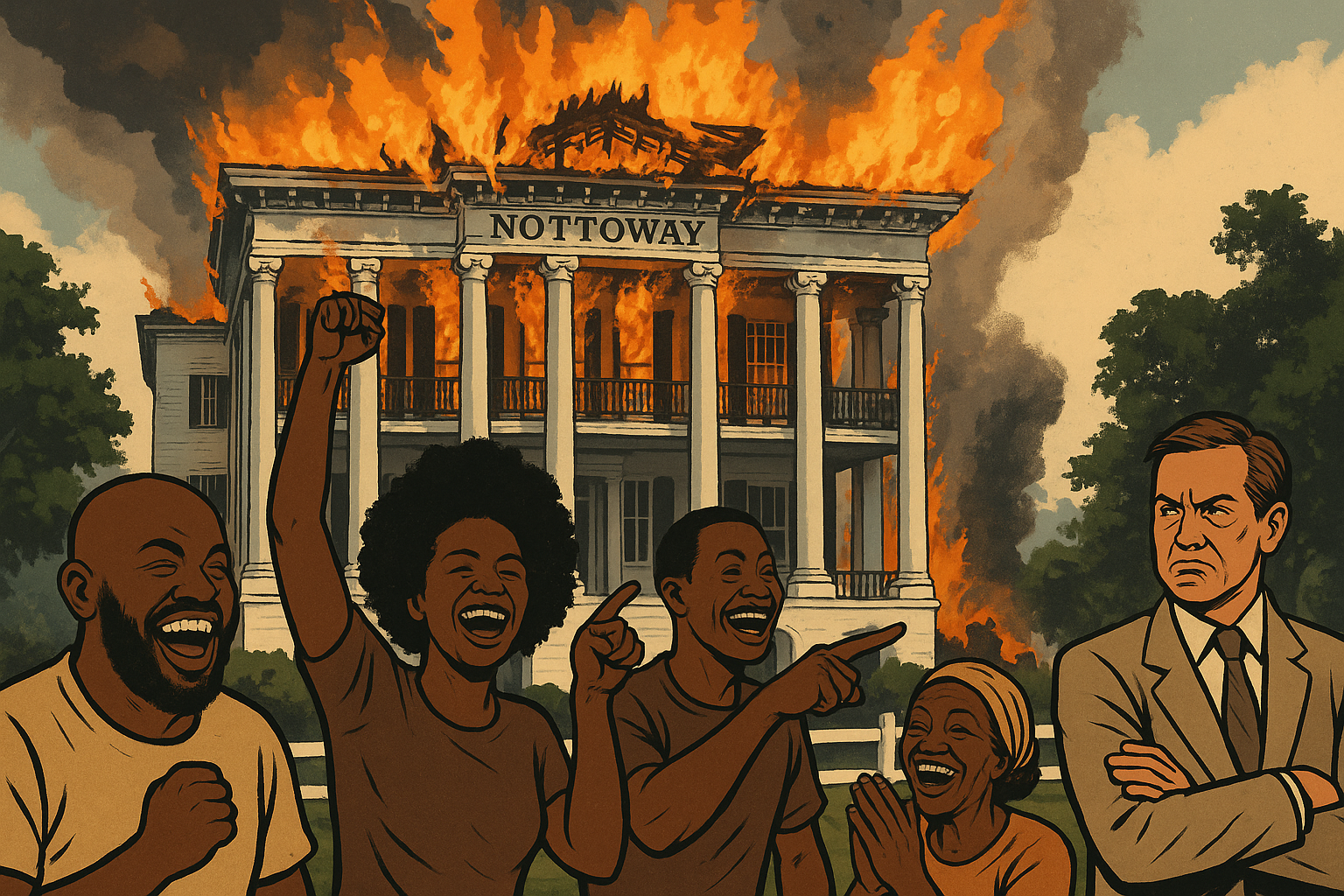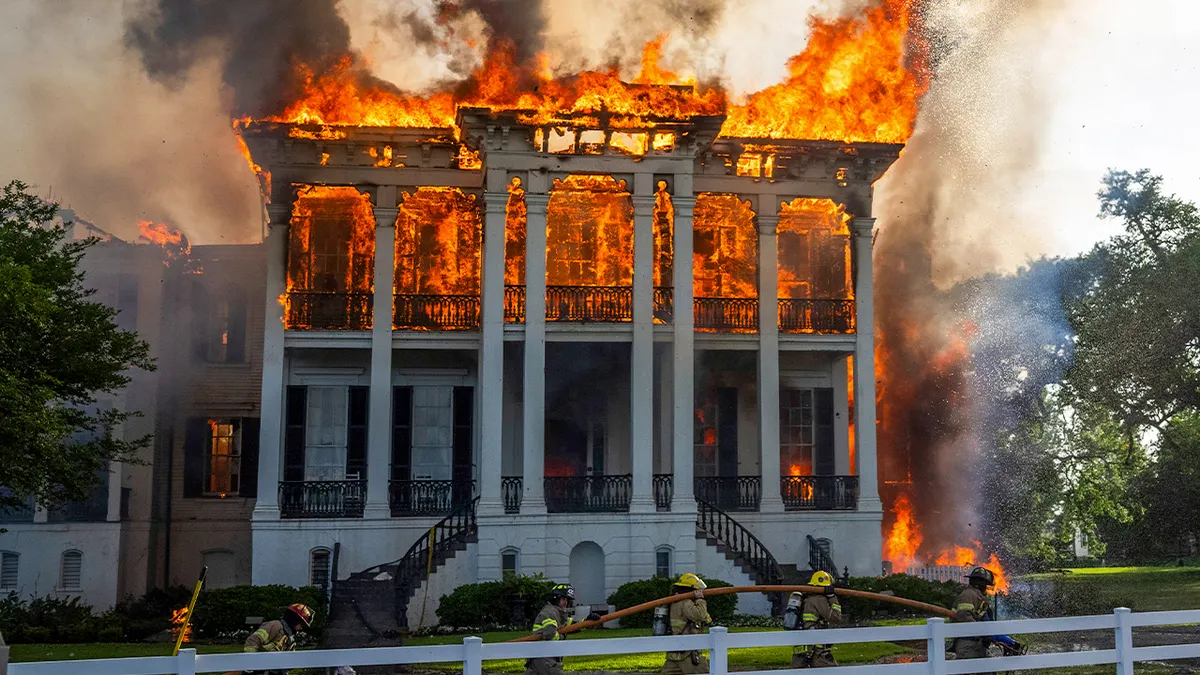White Fragility Catches Fire: Black Joy Blazes at Nottoway
By Eugene Collins
The charred remains of the Nottoway Plantation tell a story that goes far beyond the flames. During my visit the weekend after the fire, I encountered a mix of emotions among the attendees—while some mourned in silence, Ms. Jones came to celebrate.
For her, the fire was not a loss; it was a release—a release from the Southern myths that romanticize pain. From the ashes, Black joy emerged, loud and unapologetic.
This moment encapsulated the deep divide that this site has always represented: Black joy in conflict with white fragility on stolen ground.
Built in the 1850s by enslaved Africans for sugar planter John Randolph, Nottoway stood as the largest antebellum mansion in the South. Over time, it transformed into a wedding venue and tourist destination but rarely confronted the reality of the 155 enslaved people who constructed and maintained it.
To some, Nottoway was an architectural marvel; to others, it was a monument to oppression.
The fire in May 2025, which destroyed the mansion, reignited the debate: Was it a tragedy or a reckoning?
Comment sections buzzed with opinions: history or horror? Loss or liberation?
Ms. Jones reminded us that Black joy is a form of resistance. It’s healing. It’s a reclamation.
The mansion may be gone, but the history—raw and unfiltered—endures.
And perhaps, just perhaps, it’s time for more myths like this to go up in flames.


